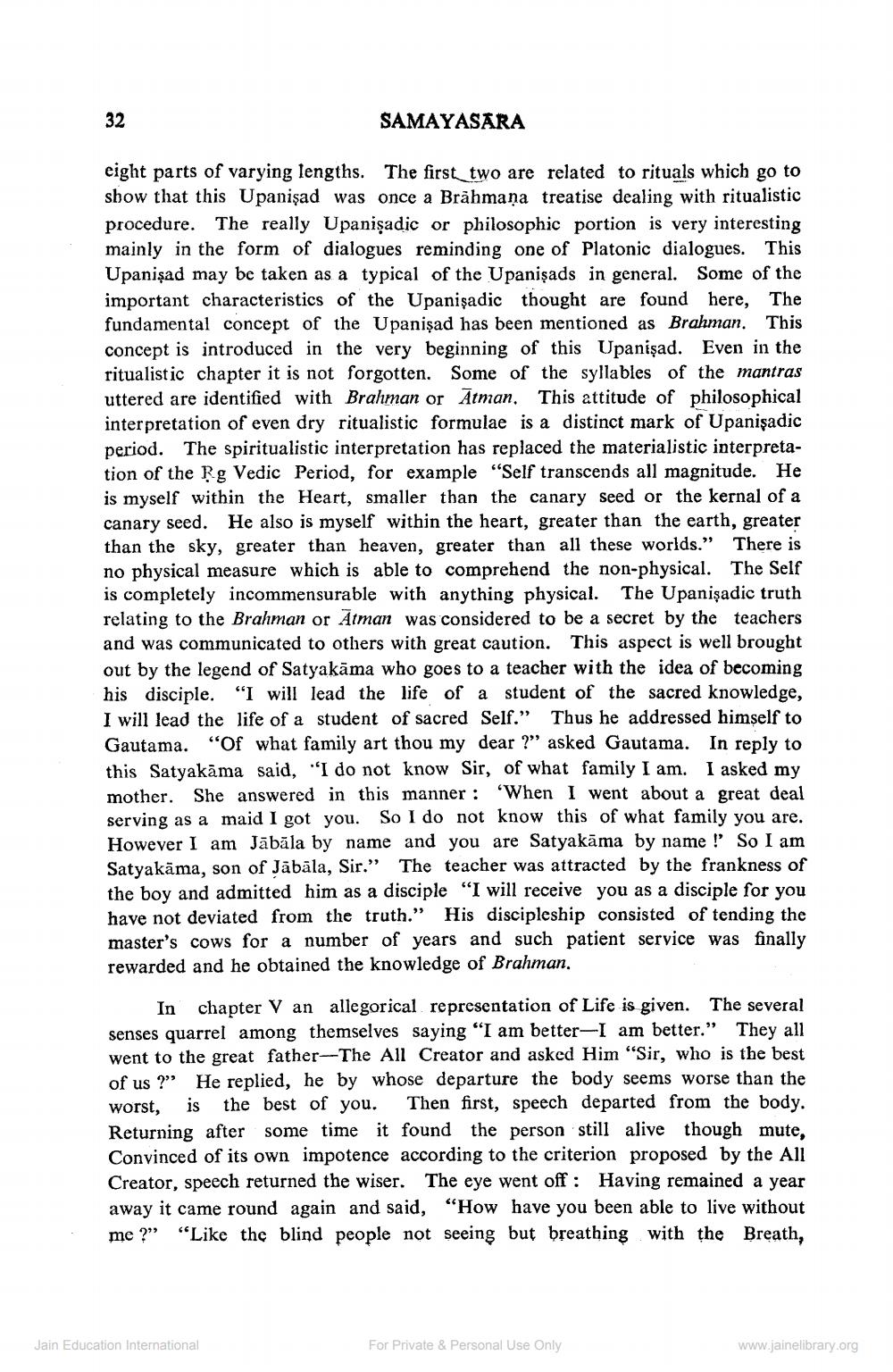________________
32
SAMAYASARA
eight parts of varying lengths. The first two are related to rituals which go to show that this Upanişad was once a Brāhmaṇa treatise dealing with ritualistic procedure. The really Upanişadic or philosophic portion is very interesting mainly in the form of dialogues reminding one of Platonic dialogues. This Upanişad may be taken as a typical of the Upanişads in general. Some of the important characteristics of the Upanişadic thought are found here, The fundamental concept of the Upanişad has been mentioned as Brahman. This concept is introduced in the very beginning of this Upanişad. Even in the ritualistic chapter it is not forgotten. Some of the syllables of the mantras uttered are identified with Brahman or Ātman. This attitude of philosophical interpretation of even dry ritualistic formulae is a distinct mark of Upanişadic period. The spiritualistic interpretation has replaced the materialistic interpretation of the Rg Vedic Period, for example "Self transcends all magnitude. He is myself within the Heart, smaller than the canary seed or the kernal of a canary seed. He also is myself within the heart, greater than the earth, greater than the sky, greater than heaven, greater than all these worlds.” There is no physical measure which is able to comprehend the non-physical. The Self is completely incommensurable with anything physical. The Upanişadic truth relating to the Brahman or Atman was considered to be a secret by the teachers and was communicated to others with great caution. This aspect is well brought out by the legend of Satyakāma who goes to a teacher with the idea of becoming his disciple. "I will lead the life of a student of the sacred knowledge, I will lead the life of a student of sacred Self.” Thus he addressed himself to Gautama. “Of what family art thou my dear ?" asked Gautama. In reply to this Satyakāma said, "I do not know Sir, of what family I am. I asked my mother. She answered in this manner: When I went about a great deal serving as a maid I got you. So I do not know this of what family you are. However I am Jābāla by name and you are Satyakāma by name ! So I am Satyakāma, son of Jābāla, Sir.” The teacher was attracted by the frankness of the boy and admitted him as a disciple “I will receive you as a disciple for you have not deviated from the truth.” His discipleship consisted of tending the master's cows for a number of years and such patient service was finally rewarded and he obtained the knowledge of Brahman.
In chapter V an allegorical representation of Life is given. The several senses quarrel among themselves saying "I am better-I am better." They all went to the great father-The All Creator and asked Him "Sir, who is the best of us?” He replied, he by whose departure the body seems worse than the worst, is the best of you. Then first, speech departed from the body. Returning after some time it found the person still alive though mute, Convinced of its own impotence according to the criterion proposed by the All Creator, speech returned the wiser. The eye went off : Having remained a year away it came round again and said, “How have you been able to live without me ?” “Like the blind people not seeing but breathing with the Breath,
Jain Education International
For Private & Personal Use Only
www.jainelibrary.org




